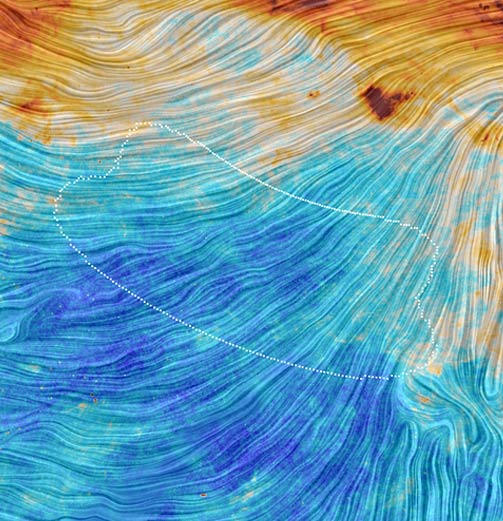Yes, it was too good to be true. The cosmic "discovery of the century" last March has officially blown up. Or will blow up next week when a new analysis of polarization in the cosmic microwave background is officially released.

The excitement burst onto the world 10 months ago when the BICEP microwave background team, working with three years of data from their detectors at the South Pole, announced that they had found modern cosmology's holy grail: evidence of gravitational waves distorting spacetime during the Big Bang's first trillionth of a trillionth of a trillionth of a second. Such gravitational waves are a key prediction of the cosmic-inflation theory of how the Big Bang happened. Inflation already rested on several impressive pieces of evidence. This was supposed to be the final crowning proof that nailed it for good. People were talking Nobel Prize.
But just as our July-issue cover story appeared, problems surfaced. The BICEP team members had thought that the patch of sky they examined was free of Milky Way dust, which could add signals of its own to the telltale "B-mode" polarization patterns in the microwave background. That assumption of a clean sky was wrong, said members of Europe's Planck microwave-background team. The BICEP group had misinterpreted a preliminary dust map that the Planck researchers had shown at a conference.
The two groups combined forces to try to tease apart the extremely subtle signals involved. Their preliminary report last fall cast the BICEP finding into deeper doubt (see Dust Makes Cosmic Inflation Signal Iffy).
The Planck-BICEP collaboration will issue its final report in a few days. According to a leak on a Planck website (soon taken down but being widely reported on), the groups conclude that the Milky Way's messy dust signal could account for everything that the BICEP team has seen then or since.
That doesn't mean Big Bang gravitational waves don't exist, just that they're below the current level of detectability through the dusty noise. Any signal from them must now have a so-called r value of less than 0.13, compared to the unexpectedly high r of 0.16 to 0.20 that the BICEP team originally reported.
In an NBC News report, cosmologist Sean Carroll sums up the situation:
The bottom line is simply that the current data don't say much about inflation, one way or another. The original BICEP2 detection seems to have been incorrect, but it was at a surprisingly high amplitude, so having it go away just sends us back to where we were a year ago.
There's hope for this pursuit yet. A next-generation project on the drawing boards is intended to measure r to an uncertainty of 0.001, hopefully good enough to separate any real inflationary signal from the foreground contamination.
Following the news leak, Planck has put up this summary on its site: Planck: Gravitational Waves Remain Elusive.
We'll have more to say when the Planck-BICEP collaboration releases the full analysis this week.
 2
2
Comments
Tom Hoffelder
January 30, 2015 at 9:53 pm
I wish I had been keeping track of all these findings that are found to be wrong, to see what percentage are right these days. Or even better, a nickel for every one of those that are found wrong!
You must be logged in to post a comment.
Anthony Barreiro
February 2, 2015 at 5:23 pm
I trust peer-reviewed journals more than press conferences. I am not a physical scientist, so I depend on disinterested experts in the relevant field to assess the validity of any claim. A responsible scientist, or team or scientists, should consider every possible alternative explanation for remarkable findings, especially the boring explanations, rather than getting swept up in premature visions of celebrity. When they go the press conference route, at least the scientific method will be self-correcting over time.
You must be logged in to post a comment.
You must be logged in to post a comment.